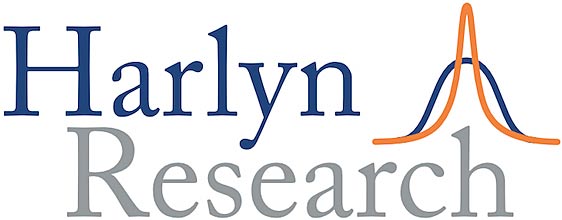Our flagship product, called Synopsis, is published every two weeks. It uses the data generated by our process to address whatever we think are the most important issues in global investing at the time.
All our notes are tagged thematically, so feel free to click on any of the topics and explore what we have written.
Under UK regulations, our research is only available to professional clients and eligible counterparties; they are not available to retail (investment) clients. Harlyn Research is not registered as an investment advisor with the SEC and therefore any information about our investment products or services is not directed at nor intended for US investors.
Timing the Turn
Monday, October 17th, 2022Think like a hedge fund with a short-equity position
At the bottom of every bear market, there is a moment when equities turn, but most long-only managers are too risk-averse to believe it. Our approach does not try to anticipate this, but there are techniques we can use to spot the opportunity sooner. The trick is to think like a hedge fund manager with a short position in equities. In every bear market since 2000, the window for a risk-efficient short position in equities has opened weeks or months after our long-only models have got to an underweight position. This window also closes well before our long-only model rebuilds its position in equities. At the bottom of the cycle, the marginal buyer is the person with a short position.
PURCHASE ALL ACCESS PASS
Already hold an All Access Pass? LOG IN
Switch Off the Autopilot
Friday, October 7th, 2022Currency impact on equity allocation is now extreme
The strength of the US dollar has hugely overstated the attractiveness of US equities to both US and international investors. The currency effect against developed markets is more powerful than it has been in all but 3% of weekly observations, going back to 1995. This is fine while it lasts, but one day it will go into reverse. Meanwhile, the dollar index is approaching generational highs. After the last tech-bust and peak dollar, US equities underperformed the rest of the world, in dollar terms, for the next five years (2003-08).
PURCHASE ALL ACCESS PASS
Already hold an All Access Pass? LOG IN
The Unreal, Real Yield
Friday, September 16th, 2022Inflation expectations in the US are still too low.
There is a big mismatch in US inflation expectations, with 10-year breakeven rates anchored around 2 percent, survey data at 5 percent and core CPI at over 6 percent. We think the latter figures are far more realistic, which means that the US fixed income and equity markets could be in for a nasty shock. We also think that global currency markets are becoming disorderly and that the yen, euro and sterling will all test historic lows against the dollar. It’s not a “sell-everything” strategy, but it is closely related. There may soon be an interesting opportunity in EM Equities and EM Bonds. The last bull market in EM Equities started about three months before the dollar index hit its last high in late 2001 and we see other historical parallels which spark our attention,
PURCHASE ALL ACCESS PASS
Already hold an All Access Pass? LOG IN
Currency, Currency, Currency
Friday, September 2nd, 2022Euro and sterling FX markets could become disorderly.
Nobody likes to consider the prospect of a currency crisis, but we think this is getting more likely by the day. We have long thought that the hiking cycle in the US would cause at least one major asset class to come unstuck. When we wrote the original note, we didn’t think it would be European currencies, but this is what the price action now suggests. Both sterling and euro have broken down out of previous trading ranges and both could test historic lows if the FX markets become prisoners of their own momentum, as sometimes happens. European investors need to own as many natural hedges as they can – US issuers in credit and dollar earners in equities.
PURCHASE ALL ACCESS PASS
Already hold an All Access Pass? LOG IN
Messy Reality
Friday, August 19th, 2022Using sector betas to evaluate investor attitudes to risk
We wanted to get a handle on which equity regions had the most risk-averse investors, so we measured the beta of our recommended overweight and underweight sectors. We found that reality is much messier than we thought and that pre-conceived, US-centric attitudes to risk do not translate well to other regions. Our numbers suggest that Eurozone investors are the most risk averse, but the sectors they use to express this view are not the ones that US investors would choose.
PURCHASE ALL ACCESS PASS
Already hold an All Access Pass? LOG IN
The Great Undiscounted Risk
Friday, August 5th, 2022Our models expect a bear-steepening in the US yield curve
There is a widespread and unspoken assumption that the Fed will curtail QT if the US economy starts to suffer and that there are no circumstances in which it would accelerate it. We think this assumption needs to be tested. Our models suggest a bear-steepening in the US yield curve is more likely than continued inversion or a bull-steepening. If we are right, this can only be bad news for US and global equities, because our models suggest that the equity rally is completely explained by the recent collapse in 10-year yields. Indeed, equities have underperformed bonds on a risk-adjusted basis since the end of June. If the bond market becomes less supportive later this year, we think there is another significant down-leg in store for equities.
PURCHASE ALL ACCESS PASS
Already hold an All Access Pass? LOG IN
Pivot to Asia
Friday, July 22nd, 2022It may be the least-worst option
There is a leadership vacuum in global equity markets. The US, the Eurozone and the UK all have serious issues to confront, ranging from valuation excess and monetary tightening to political uncertainty and energy rationing. Japan and Emerging Asia share some of these problems but are not as badly affected. One is a low return, risk reduction trade, while the other offers high risk and high reward. Both strategies have a place in a well-diversified global equity portfolio.
PURCHASE ALL ACCESS PASS
Already hold an All Access Pass? LOG IN
Estimate Breadth
Friday, July 8th, 2022The raw data look reassuring but the trends aren’t
The percentage of companies in the S&P500 with no drawdown in their earnings estimates is declining and just about to drop below its median for the last 15 years. The percentage where there is a drawdown of more than 20% is about to start rising, but from a low level. We are still within normal ranges on both measures, but if they move out of this, the downside is significant and the recovery takes much longer than the decline. At the sector level, we cannot make sense of the relative rankings in several cases. In particular, we think the consensus is far too optimistic about the outlook for Industrials.
PURCHASE ALL ACCESS PASS
Already hold an All Access Pass? LOG IN
Lower for Longer
Friday, June 24th, 2022New worst-case scenario for US Equities
We have cut our reasonable worst-case estimate of where the S&P500 may bottom from 3,400 to 3,000. This follows on from our last note which argued that current consensus earnings were likely to drop by at least 15% before hitting their trough sometime in 2023. Our new target implies a forward pe ratio of about 15x, which is slightly lower than the median for this century. As consensus forecasts are reduced, we expect the earnings mix to move away from highly-valued sectors like Tech and Consumer Discretionary towards lowly-valued sectors like Energy and Materials. The other reason for our new target is that nobody has any profits from other investments which they can reinvest into equities. US 7-10 Treasuries are down by about 17% since the equity market peaked, compared with gains of about 10% at the equivalent stage of the bear markets in 2001 and 2008.
PURCHASE ALL ACCESS PASS
Already hold an All Access Pass? LOG IN
Search our Site
- Bear Markets (12)
- Bubble (2)
- Cash (7)
- China (42)
- Commercial Property (1)
- Commodities (7)
- Corporate Bonds (16)
- Correction (10)
- Correlation (9)
- COVID-19 (3)
- Credit Quality (2)
- Crude oil (1)
- Defensives (14)
- Diversification (26)
- Dividends (3)
- Dollar index (6)
- Duration (1)
- Earnings Estimates (7)
- Economic Forecasts (2)
- Elections (8)
- Emerging Markets (38)
- Energy Prices (14)
- Equities (56)
- ESG (2)
- Eurozone (35)
- Eurozone Crisis (7)
- Financials (9)
- Fiscal policy (2)
- FX rates (27)
- Geo-Political Risk (15)
- Global Equities (53)
- Government Bonds (24)
- Harlyn's Process (24)
- Healthcare (2)
- Hedge Funds (3)
- High Conviction Ideas (1)
- High Yield (2)
- India (2)
- Industrials (4)
- Inflation (6)
- Interest Rates (6)
- Investment Styles (7)
- Japan (23)
- Leverage (1)
- Market dislocation (6)
- Market Timing (38)
- Momentum vs mean reversion (3)
- QE / QT (10)
- Real Economy (3)
- Real Estate (5)
- Real Yield (2)
- Recession (4)
- REITs (1)
- Risk aversion (9)
- Risk-Adjusted Returns (23)
- Rotation (17)
- Seasonality (11)
- Sector Strategy (47)
- Small Caps (5)
- Tail Risk (5)
- Technology (22)
- Turning Points (3)
- United Kingdom (21)
- United States (64)
- US Treasuries (17)
- Volatility (29)
- White Paper (1)
- Yield curve (8)

